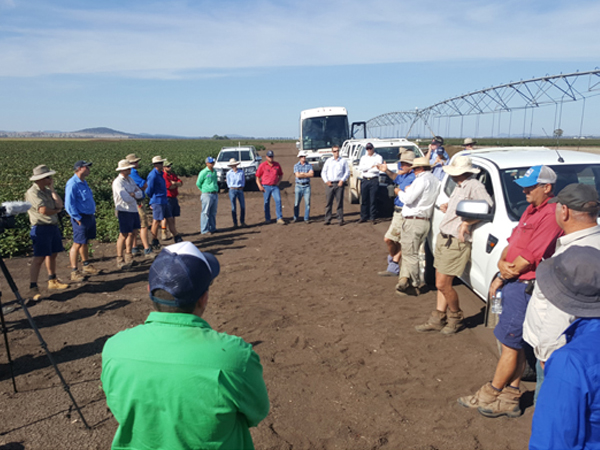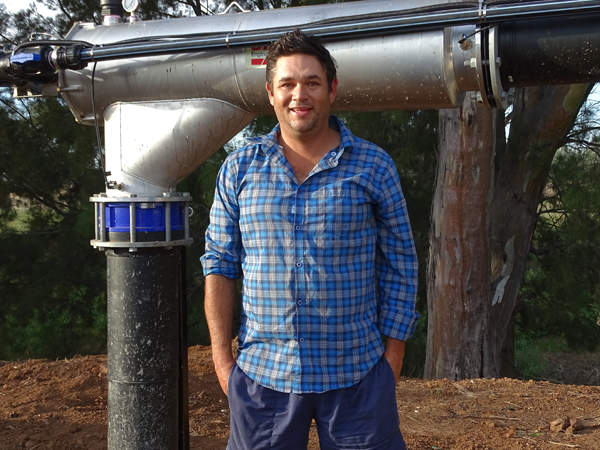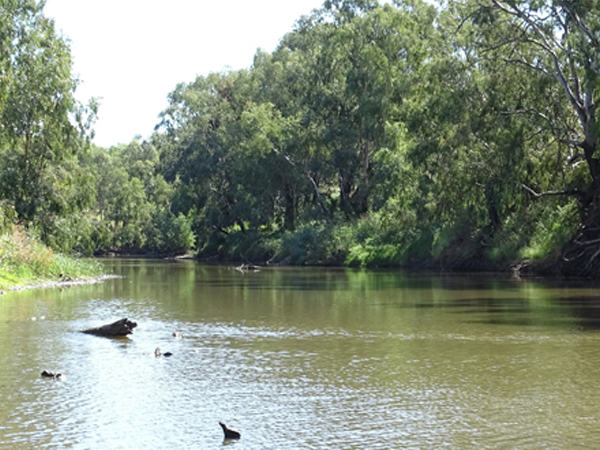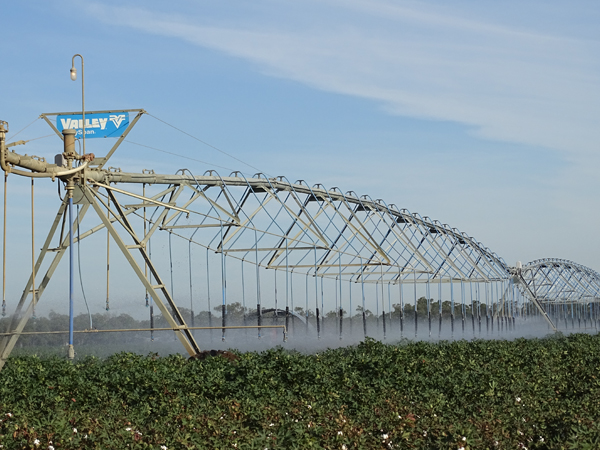Smart strategies for more efficient water use
By Claire Norris, NSW Department of Primary Industries
Farmers working in the irrigation industry are no strangers to planning ahead and calculating risk, and they’re taking a pragmatic approach out in the paddocks when it comes to tackling climate change.
With the help of the New South Wales Sustaining the Basin: Irrigated Farm Modernisation (STBIFM) program, irrigators are using technology and innovation to prepare for a future with less water.

The bus tour visited three properties with overhead systems (Image: George Truman)
The program
STBIFM recently teamed up with a busload of knowledge-thirsty farmers to visit properties in the Gunnedah region that are using water efficient overhead irrigation technology.
James Barlow’s property, Mirabinda, was a key stop on the tour. With STBIFM support, James has installed fully automated centre pivot overhead irrigators. He’s also upgraded his pumps, water storages, and power supply.
The improvements mean James can grow more crop using less water, future proofing his farm against a potential decline in water availability.

James Barlow and his new river pumping station (Image: Claire Norris)
Overhead irrigators give greater control over when and how much water is applied. Water savings can be dramatic, particularly in the early stages of crop growth or when rain provides unexpected extra moisture.
The new system can be operated remotely and has the capacity to irrigate the whole farm.
“Growing cotton under flood irrigation was very labour intensive. With the pivots I can grow cotton more efficiently. I can run the whole system, water the whole farm while sitting on the tractor,” said James.
Importantly, half of the water saved as a result of upgrading systems on Mirabinda has been returned for environmental use.

Lower Namoi river near Gunnedah NSW (Image: Claire Norris)
The STBIFM program provides financial support for eligible irrigators to modernise infrastructure and upgrade equipment. The program recovers non-productive water that was being lost through evaporation, leakage, and system inefficiencies. At least 50 percent of the water saved is then transferred to the Commonwealth for environmental use.
The remaining savings can be kept on-farm to increase production without an increase in water extraction, creating a win/win scenario for production and sustainability in the Murray Darling Basin.
Another important part of the program are grants of up to $2,000 to undertake an Irrigated Farm Water Use Efficiency Assessment or IFWUEA.
An IFWUEA is a pre-requisite for infrastructure funding. It helps locate and quantify on-farm water losses to help irrigators make informed decisions about improving irrigation systems. The IFWUEA also gives the STBIFM program confidence that funded improvements will solve existing problems and reduce real water losses.

James Barlow’s centre pivot irrigator on display (Image: Claire Norris)
According to James, the farm planning support was extremely beneficial. It allowed him to look at the property holistically and reorganise the irrigation layout across the whole farm.
The clear message from the Gunnedah farm tour was that upgrading to overhead systems can deliver real benefits such as greater flexibility in management and crop selection, improved operational efficiency, increased yields, and more efficient water use.
The Commonwealth Government has invested $111 million into the STIBFM program. The program is funded through the Sustainable Rural Water Use and Infrastructure Program as part of the implementation of the Murray Darling Basin Plan and is delivered by NSW Department of Primary Industries.
Visit www.dpi.nsw.gov.au/land-and-water/water/sustaining-the-basin for more information.



